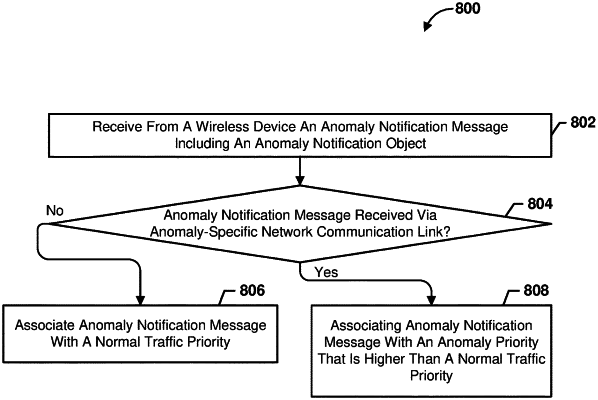| CPC H04W 68/02 (2013.01) [H04L 41/142 (2013.01); H04W 4/20 (2013.01); H04W 4/70 (2018.02); H04W 4/90 (2018.02); H04W 40/02 (2013.01)] | 12 Claims |

|
7. A communication network device, comprising:
a processor configured with processor-executable instructions to:
receive from a wireless device an anomaly notification message comprising an anomaly notification object;
determine whether the anomaly notification message was received via an anomaly-specific network communication link; and
associate the anomaly notification message with an anomaly priority that is higher than a normal traffic priority in response to determining that the anomaly notification message was received via the anomaly-specific network communication link.
|